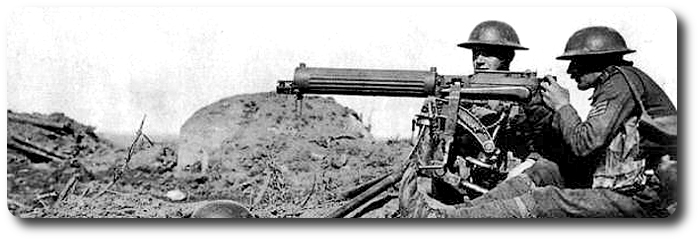
Tactical Narratives
The Defence of Duffer's Drift
This tale of a dream is dedicated to the "gilded Popinjays" and "hired assassins" of the British nation, especially those who are now knocking at the door, to wit the very junior. It embodies some recollections of things actually done and undone in South Africa, 1899-1902. It is hoped that its fantastic guise may really help to emphasize the necessity for the practical application of some very old principles, and assist to an appreciation of what may happen when they are not applied, even on small operations. Go to The Defence of Duffer's Drift.
The Battle of Booby's Bluffs
This is a series of six solutions to the same problem, each solution starting with the lessons learned by the errors in the previous solution. The six solutions are designed to teach the application of the principles as developed in the World War, showing the best methods of using the combined arms. Naturally, it is impossible to include every principle in these six solutions, but it is thought that the most important are shown. Go to The Battle of Booby's Bluffs; Part 1. Part 2 - Part 3 - Part 4 - Part 5 - Part 6
The Defence of Bowler Bridge
The story does bring out one important fact which is not universally appreciated, namely, that a force consisting entirely of armoured fighting vehicles has very definite limitations in respect of ground, and that it is faced with a very difficult problem when confronted with a physical obstacle held by a resolute and suitably equipped enemy. Go to The Defence of Bowler Bridge.
Rise, Fall and Re-Birth of the Emma-Gees
The term "EMMA GEES" was the nickname used for machine gunners during World War I. I thought it an appropriate title for this series of articles as World War I was the Canadian machine gunners' finest hour. They were the first to perfect the machine gun barrage and the first to form machine gun units. They became the recognized authority on machine gun employment and their techniques were eventually adopted by the British, French, Belgians and Italians.
This work is based on how machine guns should be used on the battlefield of today. But what about the battlefield of tomorrow. As we design our techniques to make the most of the equipment we have today, we must also change these techniques to take full advantage of new equipment that will become available in the future. As professionals we must be constantly looking ahead and preparing for change before events overtake us.
- The O'Leary Collection; Medals of The Royal Canadian Regiment.
- Researching Canadian Soldiers of the First World War
- Researching The Royal Canadian Regiment
- The RCR in the First World War
- Badges of The RCR
- The Senior Subaltern
- The Minute Book
- Rogue Papers
- Tactical Primers
- The Regimental Library
- Battle Honours
- Perpetuation of the CEF
- A Miscellany
- Quotes
- The Frontenac Times
- Site Map